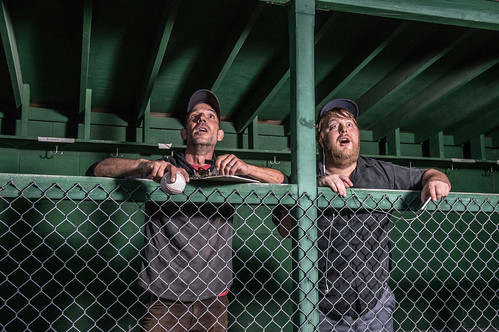There are lots of ways to skin a cat. Triggering mechanisms rely on a certain predictability; the creature will pass by a certain point at a given speed, all you do is adjust everything to factor in your latencies, get decent lighting, and you get your shot. Hopefully. Lots of trial and error, it is very challenging.
I could search for such a location, but this is the type of shot I would like to perfect:

The bats were hunting the mayfly hatch, they were concentrated in a relatively small area. This was with the 35mm macro, I had the three flashes closely concentrated; one on the camera and the other two within 6" or so. There are a few things wrong with the shot; the lens isn't sharp enough, the light is too concentrated. Sharp and with improved illumination, and a few milliseconds later that would have been a stunning shot.
What I did subsequently is tested the lenses that I own. The A 50 was much sharper than the 35mm copy that I own. The 90mm Tamron is also much sharper, but at the distances involved the depth of field is very narrow. I would like to set the focus box somewhere at 12-15 feet, with a depth of field 2 feet minimum up to 3 feet if possible. The flash mounting was also changed, with one on the body, the other two on either end of a 5 ft piece of angle aimed inwards to the focus point. Those two things improved the quality substantially, and that is as far as I got last summer as the weather and hatch conditions changed.
So building on that, I'd like something a bit longer than 50mm, and very sharp. The optical triggering extended the duration of the flash by about 25%, so I've set up a wired trigger harness. Wireless triggering has a latency about the same as the duration of the flash, so won't work. I have 5 flash units, and some stands to spread the light source out even more. I had an infrared trigger last year but didn't have the opportunity to test it thoroughly, and suspect that it may be of limited usefulness. The softness at the end of the wings on the first shot is movement blur; at 1/8 power the duration was about 1/4000th, and would like to get a faster exposure if possible with a mixture of more flashes and flash extenders.
I'd like to go into the mayfly hatch with lots of options. If I have to order something, it will put off the attempt another year. A lens between 50mm and 90mm very sharp.


 Similar Threads
Similar Threads 




















